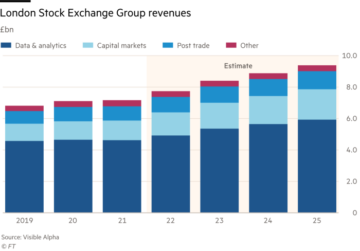Artificial intelligence and machine learning are two innovative leaders as the world benefits from technology’s draw to sectors globally. Choosing which tool to use can be difficult because so many have gained popularity in the market to stay competitive.
You choose your future when you select a machine learning tool. Since everything in the field of artificial intelligence develops so quickly, it’s critical to maintain a balance between “old dog, old tricks” and “just made it yesterday.”
The number of machine learning tools is expanding; with it, the requirement is to evaluate them and comprehend how to select the best one.
We’ll look at some well-known machine-learning tools in this article. This review will go through ML libraries, frameworks, and platforms.
Hermione
The newest open-source library, called Hermione, will make it easier and faster for data scientists to set up better-ordered scripts. Additionally, Hermione offers classes in data view, text vectoring, column normalization and denormalization, and other topics that help with day-to-day activities. With Hermione, you must follow a procedure; the rest will be handled by her, just like magic.
Hydra
An open-source Python framework called Hydra makes it easier to create complicated apps for research and other purposes. Hydra refers to its capacity to manage numerous related tasks, much like a Hydra with many heads. The primary function is the capability to compose a hierarchical configuration dynamically and override it via configuration files and the command line.
Dynamic command line tab completion is another. It can be configured hierarchically from various sources, and configuration can be given or changed from the command line. Additionally, it can launch your program to run remotely or locally and perform numerous tasks with various arguments with a single command.
Koalas
To increase data scientists’ productivity while working with massive amounts of data, the Koalas project integrates the pandas DataFrame API on top of Apache Spark.
Pandas is the de facto standard (single-node) Python DataFrame implementation, whereas Spark is the de facto standard for large-scale data processing. If you are already comfortable with pandas, you can use this package to start using Spark immediately and avoid any learning curves. A single codebase is compatible with Spark and Pandas (testing, smaller datasets) (distributed datasets).
Ludwig
Ludwig is a declarative machine learning framework that offers a straightforward and flexible data-driven configuration approach for defining machine learning pipelines. The Linux Foundation AI & Data hosts Ludwig, which can be used for various AI activities.
The input and output features and the appropriate data types are declared in the configuration. Users can specify additional parameters to preprocess, encode, and decode features, load data from pre-trained models, build the internal model architecture, adjust training parameters, or perform hyperparameter optimization.
Ludwig will automatically create an end-to-end machine learning pipeline using the configuration’s explicit parameters while reverting to smart defaults for those settings that are not.
MLNotify
With just one import line, the open-source program MLNotify can send you online, mobile, and email notifications when model training is over. It is a Python library that attaches to well-known ML libraries’ fit() function and alerts the user when the procedure has finished.
Every data scientist knows that waiting for your training to end is tedious after training hundreds of models. You need to Alt+Tab back and forth to check on it occasionally because it takes some time. MLNotify will print your specific tracking URL for it once training starts. You have three options for entering the code: scan the QR, copy the URL, or browse to https://mlnotify.aporia.com. The development of your training will after that be visible. You’ll receive an immediate notification when training is over. You can enable online, smartphone, or email notifications to get alerted as soon as your workout is over.
PyCaret
Workflows for machine learning are automated via the open-source, Python-based PyCaret module. It is a short, simple-to-understand, Python, low-code machine learning library. You can spend more time on analysis and less time developing using PyCaret. There are numerous data preparation options available. Engineering features to scaling. By design, PyCaret is modular. Each module has particular machine learning operations.
In PyCaret, functions are collections of operations that carry out certain workflow activities. They are the same throughout all modules. There is a ton of fascinating material available to teach you PyCaret. You can begin by using our instructions.
Traingenerator
Traingenerator Use a straightforward web UI created with streamlit to generate unique template code for PyTorch and sklearn. The ideal tool to get your upcoming machine learning project off the ground! Numerous preprocessing, model construction, training, and visualization options are available with Traingenerator (using Tensorboard or comet.ml). It can export to Google Colab, Jupyter Notebook, or .py.
Turi Create
To add suggestions, object identification, picture classification, image similarity, or activity categorization to your app, you can be an expert in machine learning. Custom machine learning model development is made more accessible with Turi Create. It includes built-in streaming graphics to analyze your data and focuses on tasks rather than algorithms. Supports massive datasets on a single system and works with text, photos, audio, video, and sensor data. With this, models may be exported to Core ML for use in apps for iOS, macOS, watchOS, and tvOS.
AI Platform and Datasets on Google Cloud
Any ML model has the fundamental issue that it cannot be trained without the proper dataset. They take a lot of time and money to make. The datasets known as Google Cloud Public Datasets are selected by Google and updated frequently. The formats range from photos to audio, video, and text, and they are all highly diverse. The information is designed to be used by a variety of researchers for a variety of purposes.
Google also provides additional practical services that you might find intriguing:
- Vision AI (models for computer vision), Natural language processing services
- A platform for training and administering machine learning models
- Speech synthesis software in more than 30 languages, etc.
Amazon Web Services
Developers can access artificial intelligence and machine learning technologies on the AWS platform. One can select one of the pre-trained AI services to work with computer vision, language recognition, and voice production, develop recommender systems, and build prediction models.
You can easily construct, train, and deploy scalable machine learning models using Amazon SageMaker, or you may build unique models that support all the well-liked open-source ML platforms.
Microsoft Azure
Drag-and-drop capability in Azure Machine Learning Studio enables developers without machine learning expertise to use the platform. Regardless of the quality of the data, you can quickly create BI apps using this platform and build solutions directly “on the cloud.”
Microsoft additionally provides Cortana Intelligence, a platform that enables complete management of big data and analytics and transforming data into informative information and subsequent actions.
Overall, teams and large companies can collaborate on ML solutions in the cloud using Azure. International corporations adore it since it includes various tools for various uses.
RapidMiner
A platform for data science and machine learning is called RapidMiner. It offers an easy-to-use graphical user interface and supports processing data from various formats, including.csv,.txt,.xls, and.pdf. Numerous businesses worldwide utilize Rapid Miner because of its simplicity and respect for privacy.
When you need to quickly develop automated models, this tool is useful. You can use it to identify typical quality issues with correlations, missing values, and stability and automatically analyze data. However, it is preferable to use alternative methods while trying to address more challenging research topics.
IBM Watson
Check out IBM’s Watson platform if you’re seeking a fully working platform with various capabilities for research teams and businesses.
An open-source API set is called Watson. Its users can develop cognitive search engines and virtual agents, and they have access to startup tools and example programs. Watson also offers a framework for building chatbots, which novices in machine learning can utilize to train their bots more quickly. Any developer can use their devices to develop their own software in the cloud, and because of their affordable costs, it’s an excellent option for small and medium-sized organizations.
Anaconda
Python and R are supported via the open-source ML platform known as Anaconda. Any supported operating system for other platforms can use it. It enables programmers to control libraries and environments and more than 1,500 Python and R data science tools (including Dask, NumPy, and pandas). Anaconda provides excellent modeling and reports visualization capabilities. This tool’s popularity stems from its ability to install multiple tools with just one.
TensorFlow
Google’s TensorFlow is a collection of free deep-learning software libraries. Machine learning experts may build exact and feature-rich models using TensorFlow technologies.
This software streamlines the creation and use of sophisticated neural networks. TensorFlow provides Python and C/C++ APIs so that their potential can be explored for research purposes. Additionally, businesses worldwide have access to solid tools for handling and processing their own data in an affordable cloud environment.
Scikit-learn
Scikit-learn makes it easier to create classification, regression, dimensionality reduction, and predictive data analytics algorithms. Sklearn is based on the Python ML development frameworks NumPy, SciPy, pandas, and matplotlib. Both research and commercial uses are permitted for this open-source library.
Jupyter Notebook
A command shell for interactive computing is Jupyter Notebook. Along with Python, this tool works with Julia, R, Haskell, and Ruby, among other programming languages. It is frequently employed in machine learning, statistical modeling, and data analytics.
In essence, Jupyter Notebook supports interactive visualizations of data science initiatives. In addition to storing and sharing code, visualizations, and comments, it enables the creation of stunning analytics reports.
Colab
Colab is a valuable tool if you deal with Python. The Collaboratory, often known as Colab, enables you to write and run Python code in a web browser. It has no configuration requirements, offers you access to GPU power, and makes sharing the results simple.
PyTorch
Based on Torch, PyTorch is an open-source deep learning framework that uses Python. Like NumPy, it performs tensor computing with GPU acceleration. Additionally, PyTorch provides a sizable API library for developing neural network applications.
Compared to other machine learning services, PyTorch is unique. It does not employ static graphs, in contrast to TensorFlow or Caffe2. In comparison, PyTorch graphs are dynamic and continually calculated. Working with dynamic graphs makes PyTorch easier for some people and enables even beginners to include deep learning in their projects.
Keras
The most popular deep-learning framework among successful Kaggle teams is Keras. One of the best tools for individuals beginning a career as a machine learning professional is this one. The neural network API called Keras provides a deep learning library for Python. The Keras library is significantly more straightforward to understand than other libraries. Additionally, Keras is more high-level, making it more straightforward to understand the broader picture. It can also be used with well-known Python frameworks like TensorFlow, CNTK, or Theano.
Knime
Knime is required to create reports and work with data analytics. Through its modular data pipelining design, this open-source machine learning tool incorporates a variety of machine learning and data mining components. This software provides good support and frequent releases.
This tool’s ability to incorporate code from other programming languages, including C, C++, R, Python, Java, and JavaScript, is one of its significant features. It can be quickly adopted by a group of programmers with diverse backgrounds.
Sources:
- https://github.com/kelvins/awesome-mlops#data-validation
- https://www.spec-india.com/blog/machine-learning-tools
- https://serokell.io/blog/popular-machine-learning-tools
- https://neptune.ai/blog/best-mlops-tools
- https://www.aporia.com/blog/meet-mlnotify/
Prathamesh Ingle is a Consulting Content Writer at MarktechPost. He is a Mechanical Engineer and working as a Data Analyst. He is also an AI practitioner and certified Data Scientist with interest in applications of AI. He is enthusiastic about exploring new technologies and advancements with their real life applications
<!–
–>
- Bitcoin
- bizbuildermike
- blockchain
- blockchain compliance
- blockchain conference
- Blockchain Consultants
- coinbase
- coingenius
- Consensus
- crypto conference
- crypto mining
- cryptocurrency
- decentralized
- DeFi
- Digital Assets
- ethereum
- machine learning
- non fungible token
- plato
- plato ai
- Plato Data Intelligence
- Platoblockchain
- PlatoData
- platogaming
- Polygon
- proof of stake
- W3
- zephyrnet










